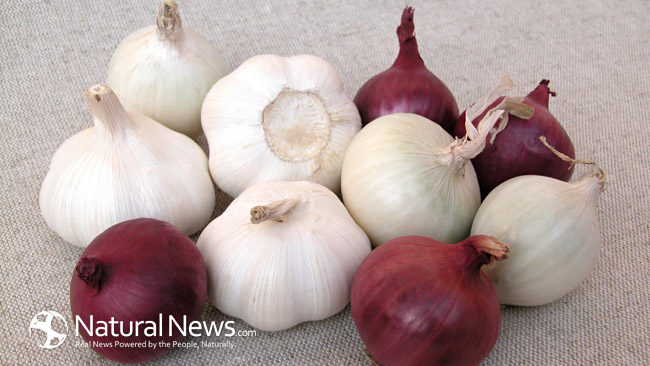Approximately 67 million American adults (1 in every 3) have high blood pressure which is linked to stroke and heart disease.(1) Certain lifestyle and dietary behaviors such as smoking, alcohol use, inactivity, carrying excess weight, and not properly managing diabetes can elevate these dangerous health conditions.
Rather than opt for costly prescriptions which come with a slew of unhealthy side effects or risks that may not be uncovered for several years, many natural (and very tasty) ways to lower blood pressure exist. In addition to getting more exercise and properly dealing with stress by practicing a form of meditation or getting more sleep, dietary changes can be extremely beneficial for those suffering with hypertension.
Top 5 Foods and Dietary Habits that Fight High Blood Pressure Naturally
1. Garlic
Thanks to one of its active substances, allicin, garlic works wonders when it comes to reducing blood pressure.(2) The substance works by relaxing blood vessels while also disrupting the blood pressure-elevating enzyme, angiotensin.(2) Overall, blood vessels are more relaxed so that better blood flow is achieved, cholesterol is reduced, and platelet aggregation is decreased.(2)
The Mayo Clinic advocates that those with high blood pressure who are seeking alternative treatment methods take garlic supplements.(3)
2. Flaxseed
Flaxseed is another blood pressure-reducing superstar. Like garlic, it’s also listed by the Mayo Clinic as a healthy alternative to traditional treatments.(3)
One study, published in the journal Hypertension, found that consumption of 3 tablespoons of flaxseeds daily over the course of six months lowered people’s high blood pressure by an average of 10 percent.(4) Those who shunned the nutty-flavored seed? That same study discovered that there was either no change at all, and in some instances, their blood pressure actually went up slightly.(4)
3. Beets
Another study found in the journal Hypertension noted that when those with hypertension drank eight ounces of beet juice, that their blood pressure remained lowered by an average of 10 points for as long as 24 hours afterwards.(4) Experts say that nitrate-rich foods like beets and leafy vegetables are helpful because they help to widen blood vessels and in turn, boost blood flow.(4)
4. Walnuts
Research has found that walnuts are beneficial in lowering blood pressure. For example, according to the Journal of the American College of Nutrition, when adults ate about one-half cup of walnuts every day for four months, their blood flow improved, pressure was lowered, and they even had smaller waist measurements.(4)
The fiber, magnesium and healthy dose of fats in walnuts are key reasons why they help fight high blood pressure.(4)
5. Less Meat, or Avoiding it Altogether
Many people have opted to become vegetarians for a number of reasons, ranging from the disturbing treatment of most animals in an effort to produce mass quantities of product to other questionable practices (use of hormones, etc.) that harm the environment as well as human health. For those who have not fully embraced such a lifestyle, it seems that an increasing amount are at least eating less meat, often enjoying healthy meals on “Meatless Monday” or for even more than a single day.
The choice is a wise one; according to medical reviews, when compared to meat-eaters, vegetarians had a lower blood pressure by an average of 7 points (systolic) and nearly 5 points (diastolic).(4)
Skip the meat. Instead, bring on the nuts, seeds, garlic, leafy greens and beets! They all taste great, are filled with numerous health benefits, and can be easily found while shopping.
Here’s to staying healthy, naturally.
Sources for this article include:
(1) http://www.cdc.gov/
(2) http://www.naturalnews.com/
(3) http://www.mayoclinic.org/
(4) http://healthyliving.msn.com/





